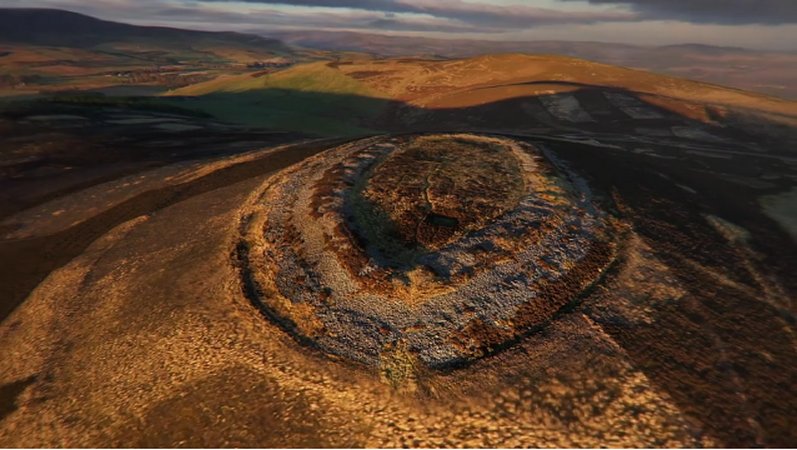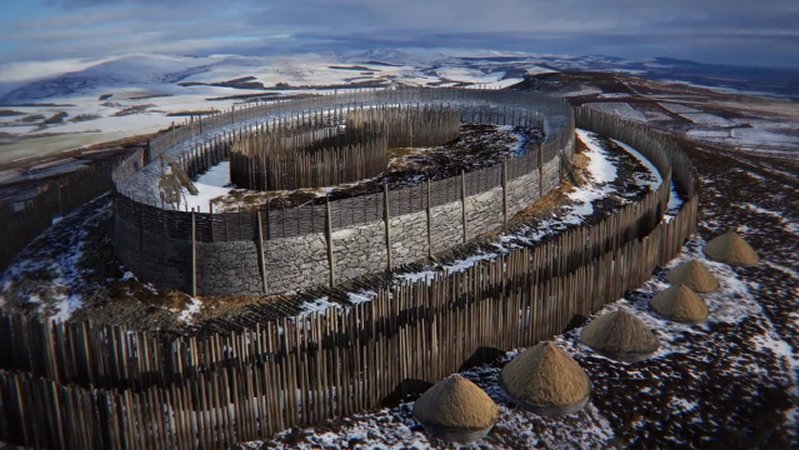MessageToEagle.com – By combining archaeological research with aerial photography and creative visualization technologies, a talented filmmaker has produced stunning recreation of Caterthun Iron Age Forts in the Grampian Mountains, in Angus, Scotland.
These images and video give us a unique and fascinating look into the past.
The White and Brown Caterthuns are two massive Iron Age hill-forts that were constructed with various building methods.

These impressive forts are among the best-preserved forts in Scotland and their names are very appropriate. The White Caterthun is crowned by a mass of pale stone, while the Brown Caterthun lies beneath a dark mantle of heather.
The fort was constructed in the last few centuries B.C. and reveals how skilled the ancient builder in Scotland were.
See also:
10 Reconstructions Of Ancient Cities, Monuments And Sacred Sites
Picts: Facts And History About Mysterious People Of Northern Scotland
History Of Jarlshof – Thousands Of Years Of History With Traces Of Picts, Vikings And Scots
More Fascinating Ancient Civilizations And Places
A mile to the Northeast, we can find the Brown Caterthun Iron Age fort. It is slightly smaller, but it is also a very intriguing ancient construction. Archaeologists believe that the Brown Caterthun fort was used either in defensive or ritual purpose. When it was built is unclear, but scientists estimate its construction range from 3,000 B.C to 500 B.C.
Who built the fort is also uncertain, but most likely it was raised by the Picts.
Kieran Baxter, filmmaker and PhD student at Scotland’s Dundee University specializes in merging aerial photography with digital visualization.
With help of archaeological research and visual FX, Baxter reconstructed the two Iron Age forts so we can get a glimpse into the ancient past.
On his website, Baxter writes that the aim of his PhD project is to “to better understand how an emerging array of aerial platforms and digital image processing techniques can be used creatively to enhance public engagement with built heritage and it’s associated archaeological narrative.”
The results of his study and work are amazing and his film recently won The Doctoral Award at the AHRC Research in Film Awards 2016.
MessageToEagle.com
Expand for references






